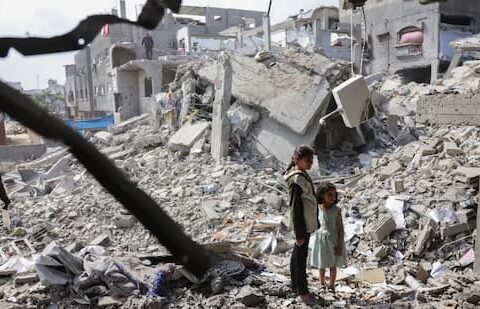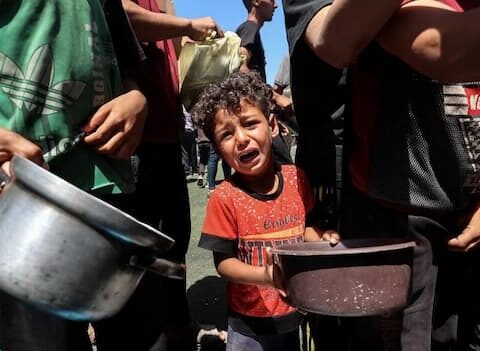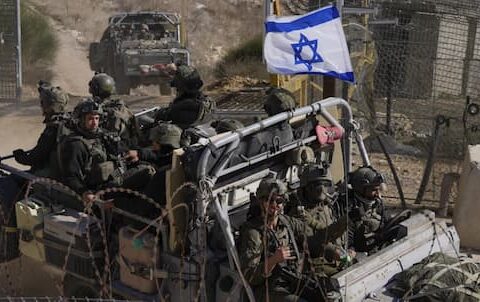The latest reports from Syria are horrifying.
In the few months following the collapse of the Assad government, international coverage of Syria has largely disappeared.
Which meant either that nothing much was happening (unlikely): or that international media largely preferred to not keep our attention on Syria beyond the ostensible ‘liberation’ by predominantly Turkish and Israeli backed rebels.
In the passed week, however, the news out of Syria has been more difficult to ignore: though the major news broadcasters have still declined to feature Syria in their main headlines or bulletins.
Compared to how much media coverage was afforded to the liberation of the Assad regime prisons two months ago (which I examined here), coverage of these current events has been muted.
But more than 1000 people, a claimed 745 of these reportedly being civilians, have been killed in clashes between ‘Syrian security services’ and ‘fighters loyal to the Assad regime’, which reportedly began last Wednesday.
By ‘Syrian security forces’, we refer to those under the banner of the new coalition government.
It’s the nature of many of these killings that’s disturbing: and reminiscent of some of the worst days of the Civil War that tore apart the country from 2011 onwards.
A Guardian report from March 9th featured the headline ‘Entire families reportedly killed in fighting in north-west Syria’.
The UN Commissioner for Human Rights, Volker Turk, describes “extremely disturbing” reports from north-west Syria, amounting to the highest death-toll in Syria since 2011.
A sense of some of the horrific nature of these events is indicated by reported videos showing ‘the bodies of dozens of people in civilian clothes piled up in the town of al-Mukhtariya, where more than 40 people were killed at one time‘. This was reported by the Syrian Network for Human Rights.
Mainstream reporting indicates, mostly subtly, that people loyal to the former regime have been the instigators of the clashes. The Guardian reported for example that ‘Syrian security forces and checkpoints were attacked simultaneously across Syria’s coast by Assad regime loyalists. Syria’s ministry of defence said that the attacks were “coordinated and premediated”…’
They also describe Assad loyalists ‘firing at cars randomly, attacking civilians and burning public buildings such as police stations.’
This depiction of events may or may not be entirely accurate – it’s hard to know. We’ll come back to that question.
But we should note that the clashes between armed combatants and the apparent massacres of civilians are two separate things: blaming one faction or another for the former doesn’t equate to the same group being responsible for the latter.
In other words, if it’s true that ‘Assad regime loyalists’ are the instigators of the skirmishes, that doesn’t mean they’re also the ones carrying out extra judicial killings.
Also, it isn’t entirely clear that these regime loyalists are the instigators in many cases. We know that members f the ousted regime have been executed in the streets n multiple occasions, from the very first days of the rebel takeover. Much of this has been largely unreported, but a March 7th article, for example, relayed that the new security forces had executed some 125 *civilians* in the ‘battle against Assad loyalists’.
Further, the apparent ethnic element to some of this killing is proving difficult to ignore. Most reports acknowledge that members of the Alawite minority sect are being targeted: despite assurances from the new Syrian leadership that such sectarian attacks would be avoided.
Attempting to be balanced in its reporting, The Guardian also acknowledges that ‘As Syrian government forces and armed civilians began to move into Alawite villages in north-west Syria, videos of abuses began to surface. Civilians began to report wholesale killings by security forces, in accounts corroborated by rights monitoring groups...’
For clarity again: ‘Syrian government forces’ now means the vague alliance under the loose leadership of the rebels (principally, HTS) that led the decisive attacks in December that toppled the Assad government.
I clarify that here because we’re used to ‘Syrian government forces’ meaning the Assad regime – which it no longer does: and it can be confusing keeping track of who is being referred to in these reports.
Continuing, however, we’re told that videos ‘seen by the Guardian’ revealed ‘fighters wearing fatigues executing unarmed people at point-blank range, and dozens of corpses in civilian clothing piled on top of each other in the village of Mukhtariya in Latakia…’

There’s an ambiguity in some of these reports as to who these fighters were or what faction they belong to.
But it’s likely more than one faction is committing killings.
In his statement, UN Human Rights Commissioner Volk Türk said: “There are reports of summary executions on a sectarian basis by unidentified perpetrators, by members of the caretaker authorities’ security forces, as well as by elements associated with the former government.”
However, according to the Syrian Network for Human Rights, the two factions responsible for the majority of the killings of civilians were the Abu Amsha and Hamzat divisions. Both of these are rebel groups affiliated to the Turkish-backed Syrian National Army.
For the record, I have not watched any of these videos – and do not wish to.
But again, some of these accounts are clearly reminiscent of horrific incidents in 2012 and 2013 at the height of the rebel offensives and regime counter-offensives.
Wall of Controversy has covered the accounts being given by Vanessa Beeley, based on her experience and on what is being communicated to her by her contacts and friends still in Syria. Her account of these events is more disturbing than even the reports appearing in the media, describing an even broader series of massacres.
She also suggests the numbers are being downplayed in Western media: likely to be more in the thousands rather than the hundreds.
She says, in her UK Column interview, ‘This morning friends were calling me in tears, and saying that their relatives and their families in Latakia, in Tartus, in Baniyas, are literally counting the bodies in the streets. There are mass graves being prepared across the region, and identification of the bodies is needed because many of them have been mutilated…’
She also suggests HTS is directly involved in the killing. ‘I mean there are videos now that are being circulated showing HTS members entering villages and towns, and if anything moves – it doesn’t matter who they are – they’re shot. Literally these videos are out there. They’re publicly available on X, on Telegram, but, of course, they’re not being picked up and even shown…’
Vanessa Beeley has been reporting from Syria for years, most notably concerning the dubious White Helmets organisation.
You can read the full transcript of the interview at Wall of Controversy‘s blog post here.
How reliable the various sources or accounts are of these events is, as ever, questionable. But what’s absolutely clear is the occurrence of mass killings of civilians.
But sectarian killings by battle-hardened rebel factions was always a likely possibility in post-regime Syria.
It is possible – even likely – that the approximate leadership currently trying to stabilise its position in this new Syria is not complicit in these specific massacres.
But that maintaining order – or a unified policy – among the various rebel factions is proving difficult, as different groups can pretty much run amok in different parts of the country.
It doesn’t seem dissimilar to the uncontrollable factionalism that took hold after the fall of Gaddafi in Libya – a chaos that is still ongoing in Libya even now, some fifteen years after the Libyan collapse.
It is fair to say also that the rebel groups are mostly subscribers to the most hard-line Islamist ideology – specifically an extreme jihadism based on Wahhabist ideology. It is an imported ideology, not native to Syria and not naturally occurring in the country’s Sunni population.
The role of Wahhabist religious clerics in the Syrian anti-government militias in the early days of the war in 2012 was well documented. As has been the presence of Al-Qaeda and other extreme groups in the rebellion from the beginning.
HTS, the group most credited with December’s decisive offensives that ousted the secular Baathist regime, was itself a rebranded offshoot of an Al-Qaeda affiliate.
Syria’s new leader Ahmed Hussein al-Sharaa, also known as Abu Mohammad al-Julani, was the founder of the al-Nusra Front, and a former leader in both Al-Qaeda and Daesh. When he led the ousting of the Assad regime in December as its poster boy, he still had a ten million dollar price on his head from the US as a designated ‘global terrorist’.
None of this disqualified him being rolled out as Syria’s new leader and broadly embraced by the international community.
As I’ve written here previously, leopards can change their spots: and ideologies or approaches can change with evolving circumstances.
That was certainly the stated hope of those who celebrated the fall of Damascus to the rebels.
But it was likely always naive to think that groups with those ideologies and those affiliations were going to equate to a smooth transition to some kind of democratic, pluralistic and multi-cultural Syria.
Irrespective of al-Julani personally, the plethora of rebel fighters and factions, foreign fighters and jihadists at large in Syria – and further emboldened by the fall of the old Syrian state – are not going to be easy to control.
Sectarian violence and revenge killings were always likely. And it hasn’t taken very long.
Assad loyalists trying to disrupt the transitional period of this new coalition through rebel-style attacks makes sense – and would of course provoke renewed fighting and retaliatory attacks.
But the described killings of civilians – even whole families – of minority communities, such as the Alawites, is seemingly a separate matter: amounting to purely sectarian murders or even ethnic cleansing.
As stated numerous times before, there is the obvious danger of Syria suffering the same sectarian carnage that followed the collapses of both the Libyan regime in 2011 and the Iraqi regime in 2003.
It is entirely predictable, in fact.
But even referring to the ‘collapse’ of those regimes in Iraq and Libya is misleading, of course – they weren’t natural events, but engineered ‘collapses’ orchestrated by external agencies.
Syria has been no different. But let’s at least hope the long term outcome might be better than Libya or Iraq.
Quite who is going to investigate or prosecute these crimes in the new Syria is entirely unclear.
It isn’t even clear who is to be officially blamed for these massacres.
Perhaps they’ll just be considered victims of the ‘revolution’.
But the major international media seems to be reporting on these events only grudgingly: and declining to place the situation in Syria high on the news agenda.
Contrast this to how comprehensive the blanket media coverage and Western political outrage was of any alleged atrocities of the Assad regime and you can see there’s a notable disparity. It should be fairly obvious why.
See all SYRIA articles here.
An Interview With JOANNE MORIARTY on the Situation in Libya…





A very balanced analysis of the various reports of events as always, and I applaud you for this. It takes great restraint and patience to treat official narratives in this way, especially when you already know (as I know you do) just how high the monstrous stack of official lies has become since 9/11. Chasing down the facts and challenging the propaganda comes to feel like a never-ending and constantly uphill battle.
And sadly, it doesn’t seem to matter to most people how they are repeatedly misled and lied to. Even those who courageously called out Bush and Blair for the Iraqi WMD fiasco, still generally believe what they are told – unless the lies come from Tel Aviv. Otherwise it seems that we are quite desperate to believe we remain on the right side of history.
This looks very much like Libya again, as you say. But then it always looked that way, and I am still astonished by how ready the MSM, including supposedly liberal outlets like the Guardian, were to get behind HTS and its leader al-Jolani during the December “revolution”. You might even have thought that lending such open support to a proscribed terrorist organisation should have led to a knock on the door and charge under section 12 of the Terrorism Act. But no, not in this case. I wonder why.
Also thanks for the citation and the link. Always appreciated.